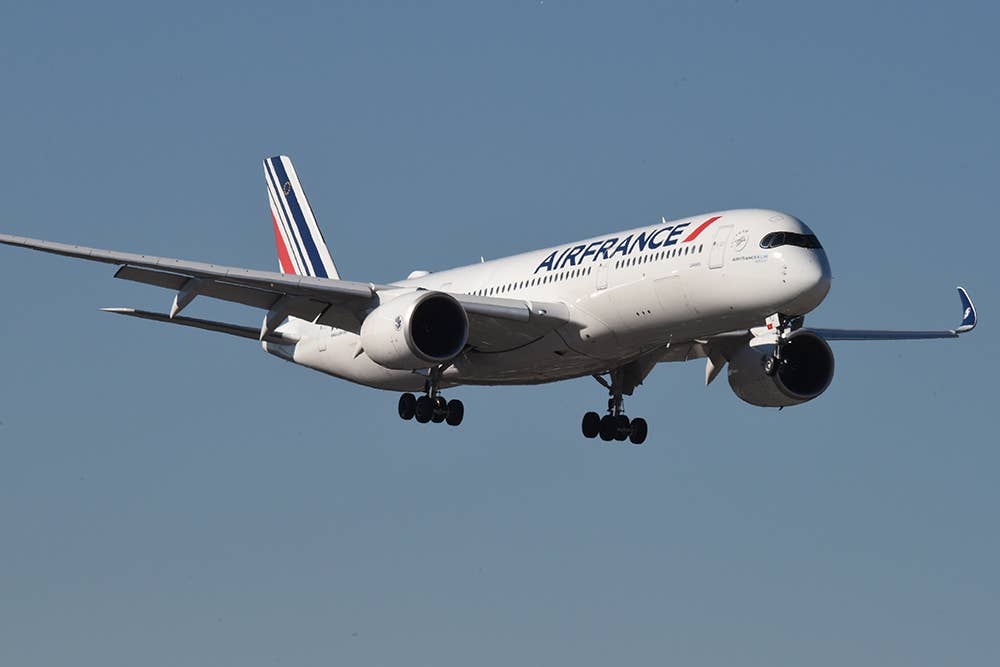French Airports May Offer Ideas to Fix the 5G Mess
As aviation struggles with wireless companies over 5G, here’s how other countries handle it.

France requires more robust restrictions on 5G infrastructure near airports. [Photo: FLYING]
The messy struggle between the U.S. aviation industry and wireless giants AT&T (NYSE:T) and Verizon Communications (NYSE:VZ) on how to deploy 5G cellphone service on newly available frequencies continues to create fallout and questions.
Some of the questions surround AT&T’s contention that other countries have safely deployed 5G wireless service around airports without disrupting aviation.
The FAA’s concerns that triggered the delay involve safety. Newly available 5G frequencies are located near frequencies used by aircraft radio altimeters. Airlines warned the Biden administration about possible interference resulting in flight delays, cancellations and potentially “catastrophic” consequences.
On Tuesday, when AT&T and Verizon announced their last-minute delay to deploy 5G around key airports, the FAA said it still anticipated there “will be some impacts due to the limitations of some radio altimeters.”
The controversy reportedly has prompted some international airlines to cancel flights to the U.S.—or change to a different type of aircraft that is not impacted by 5G because it does not rely on the radio altimeter for altitude information. The Boeing 777, for example, is one of the aircraft that is allegedly impacted by the use of 5G.
On Wednesday, as Verizon and AT&T deployed 5G on C-band frequencies, the FAA issued new altimeter approvals allowing an estimated 62 percent of the nation’s commercial fleet to perform low-visibility landings at affected airports.
According to the FAA, aircraft types with one of the five cleared altimeters include some models of the Boeing 717, 737, 747, 757, 767, 777, and MD-10/-11, and Airbus A300, A310, A319, A320, A330, A340, A350, and A380.
Meanwhile, AT&T says it is “frustrated by the FAA’s inability to do what nearly 40 countries have done” without incident. The wireless carriers have agreed to create temporary buffer zones around 50 U.S. airports for six months.
French Airports and 5G
This all begs the question: What are other countries doing differently than the U.S. regarding 5G deployment near airports?
According to the FAA, there are several differences in the way it’s done in France including:
- Frequencies have a different proximity to aviation equipment frequencies.
- 5G power levels are lower. In the U.S., the planned temporary lower 5G power levels are still 2.5 times higher than in France.
- Antennas are placed differently in relation to airfields.
- The angles of 5G tower antennas are tilted downward to reduce potential interference with aircraft equipment.
- Airport buffer zones are larger, providing protection during the final 96 seconds of flight. The U.S. temporary buffer zones around 50 airports offer only 20 seconds of protected flight time.
In Japan, wireless carriers are not allowed to install base stations that use certain frequencies near airport flight paths, according to Nikkei. That nation has reported no incidents where 5G has interfered with altimeters.
Disagreements
Earlier this month, CTIA, the U.S. wireless trade organization, disputed the FAA’s comparison with the French system. According to the CTIA, authorized 5G power levels in the U.S. are lower than in France—as well as in Spain, Denmark, Romania, Ireland, and Finland.
The CTIA also says antenna positioning rules in France are the same as the U.S. “No country, including France, has ever mandated that antennas be tilted down below the horizon,” the group says.
Experts in the U.S. are still not on the same page about whether there is even a safety issue at all. The newly available 5G C-band frequencies at issue are located at between 3.7 GHz and 3.98 GHz on the radio frequency spectrum. The frequencies used by aircraft radio altimeters are 4.2 to 4.4 GHz.
One of the airports that saw a reduction in air travel following the rollout of 5G is Sea-Tac in Seattle (KSEA). Seattle’s KOMO TV spoke with University of Washington professor of electrical and computer engineering Chris Rudlell, who helps design radios for 5G systems.
“I feel the issue is a bit overblown from an engineer's perspective or a scientist's perspective because there isn't the data there to suggest that we have a problem,” Rudlell told KOMO. "There's no scientific data out there to suggest 5G is going to interfere with airline navigation.”
On the other hand, results from a 2020 report by the Radio Technical Commission for Aeronautics (RTCA) revealed “a major risk that 5G telecommunications systems in the 3.7 to 3.98 GHz band will cause harmful interference to radar altimeters on all types of civil aircraft.”
The Biden administration and major U.S. airlines say they’re continuing to work with AT&T and Verizon on a permanent fix to this technological standoff. It’s unclear if 5G infrastructure and deployment in other countries will hold keys to the solution.

Subscribe to Our Newsletter
Get the latest FLYING stories delivered directly to your inbox






